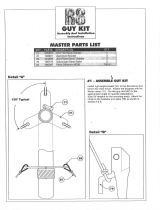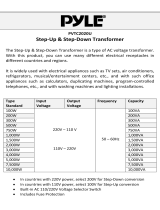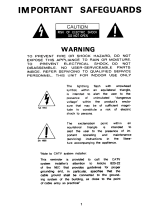Hygain CD-45IIC is a bell-type rotator with a metered control unit and mounting hardware. It can be mounted on a plate inside a tower or on a mast. The rotator unit must be wired to the control unit with a 7 or 8 wire cable. The control unit must be placed inside the house or another protected location.
The CD-45IIC has a number of features that make it a good choice for rotating antennas and beams. These features include:
- 110 VAC or 220 VAC operation
- 24 VAC, 2.25 Amp, split phase motor
- 120 VAC/26 VAC or 220 VAC/26 VAC power transformer
- 120 VAC/23 VAC or 220 VAC/23 VAC continuous duty meter transformer
Hygain CD-45IIC is a bell-type rotator with a metered control unit and mounting hardware. It can be mounted on a plate inside a tower or on a mast. The rotator unit must be wired to the control unit with a 7 or 8 wire cable. The control unit must be placed inside the house or another protected location.
The CD-45IIC has a number of features that make it a good choice for rotating antennas and beams. These features include:
- 110 VAC or 220 VAC operation
- 24 VAC, 2.25 Amp, split phase motor
- 120 VAC/26 VAC or 220 VAC/26 VAC power transformer
- 120 VAC/23 VAC or 220 VAC/23 VAC continuous duty meter transformer




















-
 1
1
-
 2
2
-
 3
3
-
 4
4
-
 5
5
-
 6
6
-
 7
7
-
 8
8
-
 9
9
-
 10
10
-
 11
11
-
 12
12
-
 13
13
-
 14
14
-
 15
15
-
 16
16
-
 17
17
-
 18
18
-
 19
19
-
 20
20
-
 21
21
-
 22
22
Hygain CD-45IIC User manual
- Category
- Television antennas
- Type
- User manual
Hygain CD-45IIC is a bell-type rotator with a metered control unit and mounting hardware. It can be mounted on a plate inside a tower or on a mast. The rotator unit must be wired to the control unit with a 7 or 8 wire cable. The control unit must be placed inside the house or another protected location.
The CD-45IIC has a number of features that make it a good choice for rotating antennas and beams. These features include:
- 110 VAC or 220 VAC operation
- 24 VAC, 2.25 Amp, split phase motor
- 120 VAC/26 VAC or 220 VAC/26 VAC power transformer
- 120 VAC/23 VAC or 220 VAC/23 VAC continuous duty meter transformer
Ask a question and I''ll find the answer in the document
Finding information in a document is now easier with AI
Related papers
Other documents
-
 CUSHCRAFT R-8GK User manual
CUSHCRAFT R-8GK User manual
-
 PyleMeters PVTC2020U Owner's manual
PyleMeters PVTC2020U Owner's manual
-
Ideal 454® Blue Operating instructions
-
Voyager JAN139 User manual
-
Ideal Wing-Nut® Wire Connector, Model 452® Red Operating instructions
-
Buchanan 30-340P Installation guide
-
 CUSHCRAFT AR-303X Owner's manual
CUSHCRAFT AR-303X Owner's manual
-
Alfa SPID ROTATOR AND CONTROLLER User manual
-
Ideal WingTwist® Wire Connector, Model WT51 Yellow Operating instructions
-
DataVideo RKM-150 User manual
























